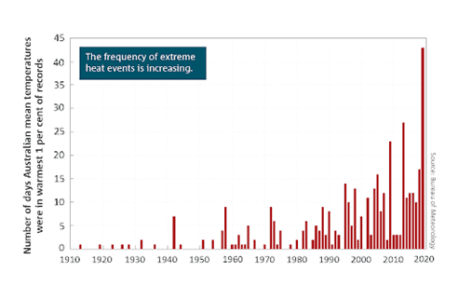Victoria’s Environment regulations
Environmental advocates are suing Victoria’s environment regulator in the Supreme Court for allegedly failing to limit carbon and toxic air pollution.
Under the state’s climate act, government agencies are required to take climate change into consideration when making decisions.
Environment Victoria will argue the state’s Environment Protection Authority failed to do this when it renewed the licences of the Loy Yang A, Loy Yang B and Yallourn power stations earlier this year without forcing them to lower their greenhouse gas emissions.
The Environment Protection Act 2017 (as amended by the Environment Protection Amendment Act 2018) and its subordinate legislation came into effect on 1 July 2021, transforming Victoria’s environment protection laws and the Environment Protection Authority Victoria (EPA).
It is the foundation of the Victorian Government’s response to the Independent Inquiry into the EPA.
The new laws change Victoria’s focus for environment protection and human health to a prevention-based approach. They are the most significant reform to Victoria’s environment protection framework in two generations.
The Environment Protection Act 2017 and subordinate legislation introduce new environmental obligations and protections for all Victorians.
The centrepiece of the new laws is the general environmental duty which requires all Victorians to take reasonable and practical steps to reduce the human and environmental health risks of their activities.
Penalties for corporate polluters and anyone committing offences against the environment have also been strengthened.
The Victorian Government welcomes the high level of public engagement and is grateful for the community’s contributions made to the development of the new framework.
The EPA continues to work with Victorian businesses, organisations and communities to help them transition to the new environment protection framework. DELWP and EPA will continue to deliver other environment protection reforms.
When it came to toxic pollutants, La Nauze said Environment Victoria would argue the permitted limits were too high when compared to similar power stations overseas, and that best practice was not being enforced by demanding the adoption of pollution control technologies used in states such as New South Wales.
Our approach is aimed at balancing care for the environment, meeting community standards, and having our power stations serve their important role of powering homes and businesses


References:
https://www.environment.vic.gov.au/sustainability/ep-act-2017
https://www.epa.vic.gov.au/about-epa/laws#
https://www.climatechange.vic.gov.au/victorias-changing-climate
http://www.bom.gov.au/state-of-the-climate/australias-changing-climate.shtml


 by
by